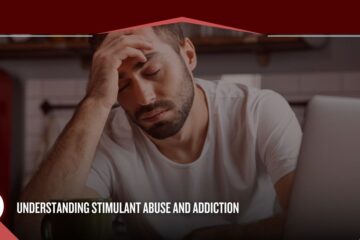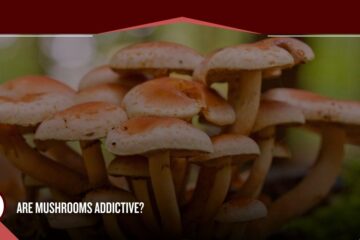There are many slang terms for addictive drugs. Molly is a slang term for MDMA. This drug is also known as ecstasy.
Ecstasy is a commonly abused illegal drug with stimulant and euphoric effects. Research from 2020 shows around 2.6 million people reported using MDMA in the previous year.[1]
Molly is an addictive, dangerous drug. It is a popular party drug because of its euphoric effects that are similar to stimulants and psychedelics. However, people who use MDMA may quickly become addicted to it. MDMA addiction can have serious short and long-term consequences.
This article will outline molly abuse and addiction.
What you will learn:
- The effects and risks of molly abuse
- How to recognize ecstasy addiction
- What to expect in MDMA abuse treatment
- Where to find addiction treatment and support
If you or someone you love struggles with molly abuse or addiction, you are not alone. Contact the specialists at Alamo Behavioral Health to explore our detox, rehab, and continuing support programs.
The Risks and Effects of Molly
Ecstasy, also called molly and other names, is a popular, illicit drug. Ecstasy is available in pill form, and MDMA is the powdered version of the drug. People may swallow pills or apply the powdered drug to their gums.
The effects of MDMA typically start within 20 to 30 minutes after a person ingests it. Molly’s effects include:[2]
- Deeper empathy
- A desire for physical closeness and touch
- Heightened senses
- Altered sense of reality
- Restlessness
- Increased energy
- A feeling of meaningful connection with others
- Increased sexual arousal
- Lowered inhibitions
People may also experience unwanted or dangerous side effects when using molly, including:
- Chills
- High blood pressure
- Jaw clenching
- Nausea
- Panic attacks
- Lightheadedness or fainting
- Aggression
- Irritability
- Memory problems
- Poor focus and attention
- Muscle tension
- Dangerously elevated body temperature
People who use molly may also become dehydrated if they do not drink enough water.[3] Many people use this drug at parties, festivals, or other social events where people are dancing or being active. This can cause dehydration to occur more quickly.
Ecstasy users are also at risk of drinking too much water. People may become confused or feel excessively thirsty, causing them to drink too much. Medical experts call this “water intoxication”. This condition results in an imbalance in the body’s essential electrolytes and can lead to death.
Recognizing Molly Addiction
Molly works in part by increasing the amount of certain brain chemicals related to reward and pleasure. Drugs that affect these chemicals can lead to abuse and physical dependence.
Not all users will develop MDMA addiction. However, addiction is possible, especially with repeated or heavy use. People who use molly frequently might eventually require it to feel “normal.” They may feel anxious if they cannot get more of the drug.
You can take the following steps to prevent molly addiction:
- Do not take ecstasy
- Do not spend time with other people who use molly
- Stay away from places where molly will be widely available
- Watch for signs of addiction and seek treatment if you recognize a problem
Molly addiction is a serious, complex condition. People with ecstasy addiction require comprehensive treatment and continuing support.
Molly Addiction Treatment
People who use ecstasy frequently often have a hard time quitting when they choose. It is one of the most dangerous and common drugs sold. Recovering from addiction can be challenging. However, finding effective treatment can help you work toward a healthier, sober future.
Recognizing the signs of addiction can help you seek treatment. Some of the signs of ecstasy addiction include:[4]
- Wanting to use molly more often
- Needing to use higher doses to get the desired effects
- Neglecting your responsibilities at home, work, or school
- Spending a lot of time and energy getting, using, and recovering from using ecstasy
- Having cravings for ecstasy
- Experiencing withdrawal symptoms if you stop taking it
Ecstasy addiction is a complex condition that affects your mental, physical, and social health. Holistic treatment can help you identify the roots of your substance abuse. In treatment, you will learn strategies to prevent relapse and remain committed to lifelong recovery.
Here is an overview of what to expect in molly addiction treatment.
Detox
During detox, your treatment team will assess your withdrawal symptoms and offer evidence-based therapies to help you complete detox. Treatment may include:
- Medications
- Emotional support, including individual and group counseling
- A secure environment
- Round-the-clock access to treatment and support
Limiting triggers and having continuous treatment can ensure you have a safe, complete detox.
Treatment
A comprehensive treatment program includes therapies to address the complex roots of substance use. Your treatment plan may include:
- Medical care and medications
- Relapse prevention education
- Mental health treatment and behavioral therapies
- Individual, family, and group counseling
- Holistic therapies like art therapy, mindfulness, nutrition support, and more
After completing a treatment program, you must stay active in recovery. Creating a relapse prevention aftercare plan can help you stay on track in your recovery for life.
Find Treatment Now
If you or someone in your life struggles with molly abuse or addiction, comprehensive treatment can give you a fresh start. Contact the Alamo Behavioral Health specialists to explore our rehab and support programs or to schedule an intake assessment.
References:
- Substance Abuse and Mental Health Services Administration (SAMHSA): Key Substance Use and Mental Health Indicators in the United States: Results from the 2020 National Survey on Drug Use and Health
- National Institute on Drug Abuse (NIDA): MDMA (Ecstasy/Molly)
- National Institute of Health (NIH): 3,4-methylenedioxymethamphetamine (MDMA): current perspectives
- Science Direct: Ecstasy (MDMA) dependence







